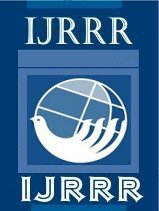|
Satyapal Yadav
Er. V. K. Modi
Er. Deepak Mathur
Keywords:
Reinforced Concrete Building, Seismic Analysis, Soil–Structure Interaction, Base Shear, Moment-Resisting Frame, Earthquake Load.
Abstract:
In seismic-prone regions, the foundation system plays a critical role in the performance and safety of multi-storey buildings. The interaction between structure, foundation, and supporting soil becomes particularly significant during earthquake events, where vertical and lateral forces act simultaneously. This study investigates the seismic response of a seven-storey reinforced concrete (RCC) building using STAAD.Pro, with a focus on the influence of footing type. The structural model was designed in compliance with Indian Standards-IS 456:2000 for concrete design and IS 1893:2016 for seismic load application. Two widely used shallow foundation systems, isolated footings and combined footings, were analyzed under medium soil conditions representative of Jaipur’s seismic zone (Zone II). The foundations were designed considering dead loads, live loads, and seismic forces, and their seismic performance was evaluated in terms of base shear, maximum displacement, and overturning moment. Results reveal that combined footings develop higher base shear and overturning moments due to increased stiffness and broader load distribution, whereas isolated footings exhibit comparatively lower displacements and force demands. The findings highlight the significant influence of footing type and geometry on load transfer, rotational stability, and overall seismic resilience. This work provides practical guidance for foundation selection in earthquake-resistant design and underscores the importance of soil–structure interaction in performance-based seismic engineering.
|
|

International Journal of Recent Research and Review

ISSN: 2277-8322
Vol. XVIII, Issue 2
June 2025
|
 PDF View
PDF View
PUBLISHED
June 2025
ISSUE
Vol. XVIII, Issue 2
SECTION
Articles
|


